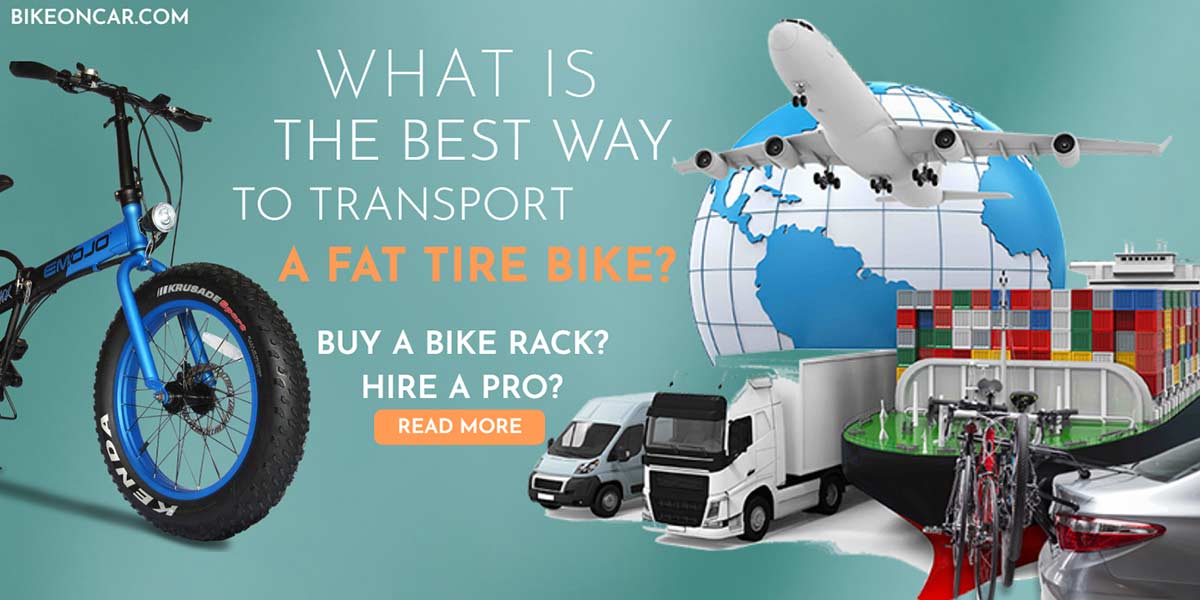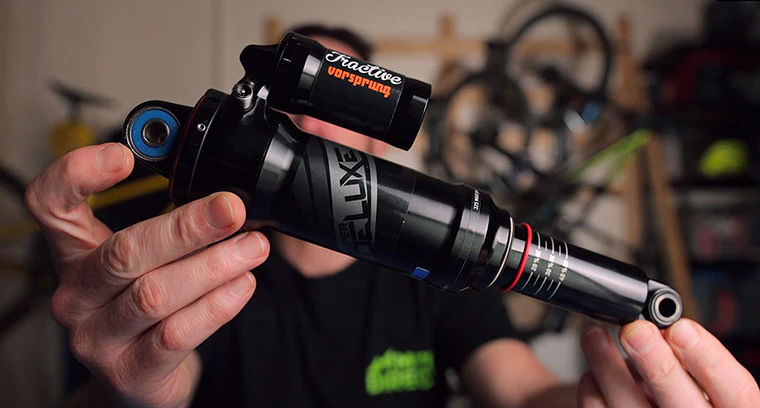What is the best way to transport a fat tire bike? Whether you’re planning a weekend adventure or heading to a local trail, figuring out the most convenient and secure way to transport your fat tire bike can be a bit of a challenge. But worry not, because today I want to share some awesome tips and tricks with you on how to transport your fat tire bike in the most hassle-free and efficient way possible.
As an affiliate, we earn from qualifying purchases. We get commissions for purchases made through links in this website’s posts from Amazon and other third parties.
What is the best way to transport a fat tire bike?
The best way to transport a fat tire bike is by using a car bike rack.
Benefits of using a car bike rack to transport a fat tire bike
It ensures that your bike is securely fastened and doesn’t move during transportation. Choose a hitch-mounted, roof-mounted, or trunk-mounted bike rack that is specifically designed to accommodate fat tire bikes, and make sure to follow the installation instructions carefully.
These racks have wider wheel trays and adjustable straps that can securely hold the larger tires in place. Make sure to choose a rack that is compatible with your vehicle’s hitch or roof system.
Additionally, it’s important to remove any loose accessories and properly secure the bike to the rack using straps or locks for added safety. This will ensure that your fat tire bike remains stable and protected during transportation.
Especially, if you have a roof rack, you can more easily transport your fat tire bike on top of your car. Also, make sure here that the bike is properly secured to the rack before you begin driving.
What are the benefits and risks of hiring a professional for fat tire bike transportation?
Another option is to hire a professional for fat tire bike transportation.
Hiring a professional for fat tire bike transportation can offer many benefits. For one, professionals have experience transporting bikes and know how to do it safely and securely. They also have the right equipment, such as bike racks and tie-downs, to ensure that your bike is protected during transport.
Additionally, hiring a professional can save you time and effort, as you won’t have to worry about loading and unloading your bike yourself. However, there are also risks associated with hiring a professional, such as damage to your bike or theft. Before deciding, it’s critical to consider the advantages and disadvantages.
Benefits of hiring a professional
When it comes to transporting your fat tire bike, you may be wondering whether to hire a professional or do it yourself. While both options have their advantages, there are several benefits to hiring a professional for your fat tire bike transportation needs.
Professional transportation companies have the expertise and experience necessary to transport your fat tire bike safely and efficiently. They have the knowledge and tools to properly secure your bike during transit, reducing the risk of damage or loss.
Most professional transportation companies offer insurance coverage for your fat tire bike during transit. This can provide peace of mind knowing that your bike is protected in case of damage or loss.
Professional transportation companies can provide customized services to meet your specific needs. Whether you need your fat tire bike transported across the country or just a few miles down the road, they can tailor their services to meet your requirements.
In summary, hiring a professional for your fat tire bike transportation needs can provide several benefits, including expertise and experience, convenience, insurance coverage, customized services, and cost-effectiveness.
Risks when hiring a professional
Transporting a fat tire bike professionally may seem like a straightforward task, but it comes with several potential risks that you should be aware of. Here are some of the potential risks that you may encounter during transportation:
During transportation, your fat tire bike may experience damage due to inadequate packing or rough handling. The bike’s frame, wheels, and other components may sustain scratches, dents, or other forms of damage, leading to costly repairs or replacements.
Another risk of transporting a fat tire bike is theft or loss. Bikes are valuable items, and they can be attractive targets for thieves. If your bike is lost or stolen during transportation, you may face significant financial losses.
Transportation delays can also be a potential risk when transporting a fat tire bike. Delays can be caused by various factors such as traffic congestion, weather conditions, or mechanical issues. These delays can result in missed deadlines or time-sensitive events.
Transporting a fat tire bike also comes with liability risks. If the bike is damaged or causes damage to other items during transportation, you may be held liable for the damages. Legal and financial repercussions may result from this.
To minimize these potential risks, it is essential to choose a reputable and experienced transportation company that specializes in transporting fat tire bikes. Additionally, you should ensure that your bike is adequately packed and insured before transportation.
In conclusion, transporting fat tire bikes professionally can be a risky business. It requires specialized knowledge and experience to ensure that the bikes are transported safely and securely.
In our opinion buying a car bike rack is an investment that you can handle on your own, install as many bikes as you wish on it (check the bike load capacity before buying), and you are sure you secured your bikes in the best possible way. Also, you won’t have to pay each time you transport your fat tire bikes and you can sell the used car bike rack if you feel you don’t need it anymore!
What type of vehicle do you need for fat tire bike transportation?
For fat tire bike transportation, you don’t necessarily need a specific type of vehicle. One option is to use a pickup truck with a bed extender or a bike rack that can accommodate the wide tires. Another option is a trailer hitch bike rack, which can also support fat tire bikes securely.
If you don’t own a pickup truck or don’t want to invest in a hitch-mounted rack, you can consider using a roof rack system with a fat tire adapter. This will allow you to transport your bike on top of your vehicle, leaving the trunk space free. Just make sure to check the weight and size limits of the rack system before making a purchase.
How do you secure a fat tire bike for transport?
If you are transporting a fat tire bike, make sure all loose accessories have been removed, including water bottle cages and saddlebags. Next, find a sturdy car bike rack or hitch carrier that can accommodate the wide tires of your fat bike.
Use straps or bungee cords to securely fasten the bike to the rack, making sure it won’t shift or wobble during transport. It’s also a good idea to use additional padding or foam to protect the bike’s frame and prevent any scratches. Lastly, double-check that all straps and fastenings are tight before hitting the road to ensure a safe and worry-free journey.
5 Better Tips For Transporting Your Bike Video:
Final words
The best way to transport a fat tire bike is crucial for both enhancing your biking experience and ensuring the safety of your precious wheels. If you think about various options such as using a roof rack, a hitch rack, or even a truck bed, you’ll be able to find the right solution for your needs.
Investing in bike transport accessories, such as wheel mounts or frame straps, can provide added security and peace of mind during transportation. Whether you’re heading to the mountains for a thrilling fat tire mountain bike adventure or simply enjoying a leisurely ride through the city, having a reliable and efficient method of transporting your fat tire bike is essential.
So, take the time to explore the different ways to transport your fat tire bike and make the necessary adjustments to improve your biking life. Happy riding!
FAQ
- What is a fat tire bike?
Answer: A fat tire bike, also known as a fat bike, is a type of bicycle designed with wider and larger tires than traditional bikes. These tires can range from 3.8 to 5 inches in width, allowing the bike to have better traction on challenging terrains such as snow, sand, or mud. - Why would I need to transport a fat tire bike?
Answer: There can be various reasons to transport a fat tire bike – for example, you may want to take it on a biking trip to a different location, transport it for repair or maintenance, or bring it to a cycling event. - What is the best way to transport a fat tire bike?
Answer: The best way to transport a fat tire bike depends on the method that suits your needs and preferences. Here are a few popular options: - What is a roof-mount bike rack?
Answer: A roof rack mounted on your vehicle is a secure way to transport a fat tire bike on your vehicle’s roof. Ensure that the rack is compatible with fat tire bikes and includes a suitable clamp or tray system to prevent any damage during the journey. Be sure to check the maximum weight capacity of your roof rack. - What is a hitch-mount bike rack?
Answer: A hitch mount rack is another practical option for transporting a fat tire bike. These racks typically attach to the hitch receiver on the back of your vehicle, offering robust support for your bike. Make sure the rack is suitable for fat tire bikes and check its weight capacity. - What is a tailgate pad?
Answer: This option is particularly convenient if you have a pickup truck. A tailgate pad is a padded mat that covers the tailgate, allowing you to easily transport multiple fat tire bikes without damaging the bikes or your vehicle. - What is a bike trailer?
Answer: If you need to transport multiple fat tire bikes or additional gear, using a bike trailer can be an excellent choice. Ensure the trailer is designed to accommodate fat tire bikes and that it is properly secured to your vehicle. - Can I transport a fat tire bike inside my car?
Answer: While it may be possible to transport a fat tire bike inside your car, it can be quite challenging due to the size and dimension of the bike. However, if you have a large trunk or a spacious SUV, you may be able to carefully disassemble and pack the bike inside. - Are there any specific precautions to take while transporting a fat tire bike?
Answer: Yes, there are a few precautions to keep in mind when transporting a fat tire bike:
1. Ensure the bike is properly secured to the chosen method of transportation, whether it is a rack, pad, or trailer.
2. Consider using extra padding or protection for delicate bike parts to prevent any scratches or damage during transit.
3. Regularly check the security of the bike during the journey, especially if traveling long distances.
4. Be cautious of low-clearance areas, such as parking garages or tunnels, to avoid potential collisions or damage. - Are there any additional accessories or equipment that can enhance bike transportation?
Answer: Yes, there are additional accessories that can supplement the transportation of your fat tire bike, such as bungee cords or straps to ensure a secure fit, bike covers for protection against weather elements, or locks for added security. - What else should I know?
Answer: Remember to always refer to the specific instructions provided by the manufacturer of your chosen transportation method for the most accurate guidance on how to transport your fat tire bike effectively and safely.
Thank you for reading this article!

- Locking Bike Hitch Rack - 17/03/2025
- Bicycle Protective Gear for Adults - 17/03/2025
- How to Find Bike Trails - 16/03/2025




